At CarnivoreWeb.com, we independently review products and outfitters. However, we may earn a commission when you purchase products through links on our site. Read our affiliate policy. Read about how we test products.
We go on safari with Hunters Care to help underprivileged areas in Africa.
The African safari. Everyone has an idea of what a hunt like that entails. For some, it means the challenge of stalking foreign game on its own turf. For anti-hunters, it’s animal cruelty highlighted by infamous trophy photos widely shared on social media. For us, the African safari meant delivering management-hunt, plains game to underprivileged South African school children who’d otherwise not have meat in their diets. Cue the awkward silence and moral handwringing from the anti-hunting crowd.
Working with Russ Field Safaris, a premier professional hunting and guiding service, we participated in the Hunter’s Care program created by the Professional Hunters’ Association of South Africa. This African Safari wasn’t just about the animals harvested, but tracking the field-to-table story of how a sustainable food source is maintained, processed, and consumed by the global community.
The Plan
The hunt followed a simple plan — pursue overpopulated animals on game lands, harvest them, deliver them to the local skinners, and then store them until they’re processed into smaller, bone-in pieces of meat. At the end of the week, we planned to visit the school sponsored by Russ Field Safaris and stuff the freezer with enough meat for 120 kids for more than a week. It’s part of an established program, and we planned to document the entire process. A safari is a journey, and along the way, we planned to experience Africa in a unique way and do a good deed in the process.
The Gear
Most plains game are about the size of a large deer or small caribou. Professional outfitters suggest using .30-caliber rifles chambered for cartridges such as .308, .30-06, and 300 Win Mag. They want hunters to drop the animals quickly and do so with the smallest caliber that’ll do the job. In Africa, meat preservation is key, and smaller calibers do less damage if a shot isn’t right in the vitals. An improperly placed shot could mean destroying a good portion of meat; accuracy matters beyond caliber choice. Bush meat is highly valued, and we weren’t going to waste any of it.
Under the guidance of a professional hunting guide, hunters should be able to get in within a couple hundred yards of most animals. Rifle optics with lower magnification ranges are desirable in the bush because the wider field of view helps with picking up game quickly. The ubiquitous 3-9x power scope is ample.
As for personal gear, focus on clothing and lightweight essentials. Walking through thick African brush is no place for shorts and T-shirts. Our guide carried a Benchmade in his right front pocket, a folding ammunition wallet containing an extra 10 rounds of 240 Weatherby Magnum ammunition, and his binoculars. To say we didn’t have to carry much is an understatement. Stalks are relatively short, under an hour or so, and gear is stored back at the safari truck. A good set of binoculars is a nice-to-have, as it’s helpful to have another set of eyes during glassing sessions.
The methods of hunting vary from walking and stalking to riding in the back of a Toyota Hilux to bushwhacking to gain vantage points. It seems like everything in South Africa is barbed or thorned and looking to cut or impale you. For this reason, long pants and long-sleeve shirts are essential, along with a good wide-brimmed hat and sturdy boots. On the Eastern Cape, we weren’t worried about mosquitos, as there are none and there’s no risk of malaria. Thus, we didn’t have to get any vaccinations. In a way, this helped us focus on what was around us and taking in the environment without distraction.
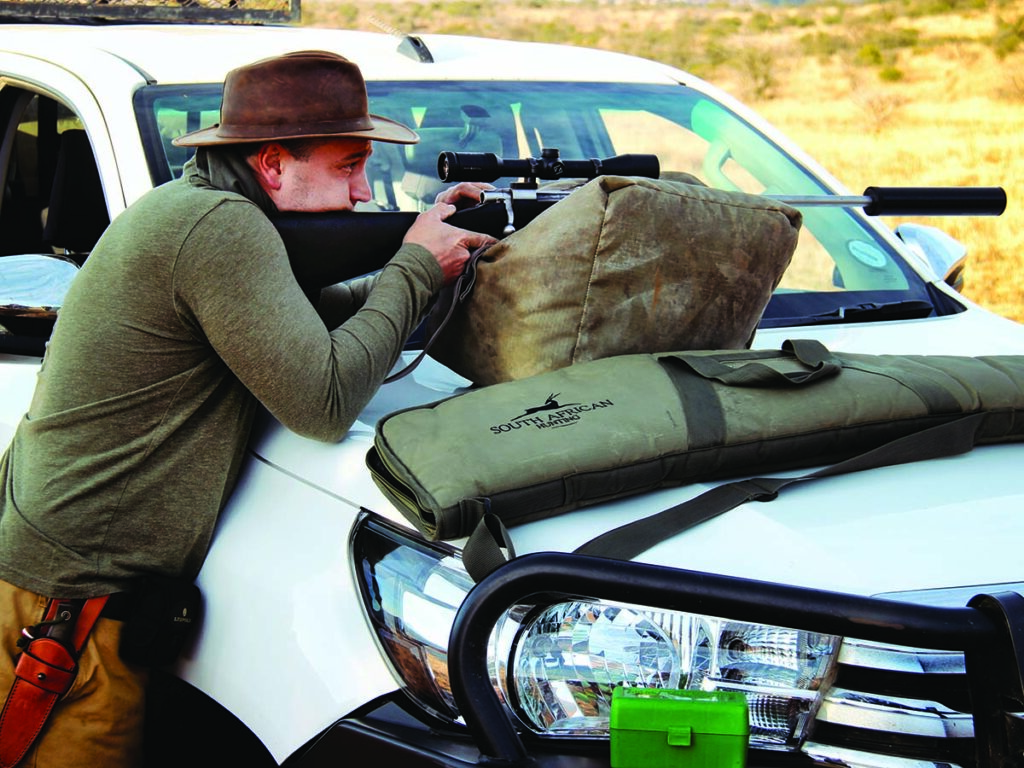
Getting There
Hunting in Africa is a unique experience, and traveling to the Dark Continent is part of the adventure. Expect a near 24-hour trip to get there and the same for the return. If you plan on traveling with a personally owned rifle, you’ll need to apply for a temporary permit to carry it while in South Africa. The Professional Hunters Association of South Africa (PHASA) can help with this process. A PHASA representative greets hunters at the arrivals area of the airport with their name on a sign and escorts their charges to the police-controlled firearms area. From there, a proper porter will whisk customers and their luggage past the unofficial and aggressive porters. Visiting hunters who want to avoid this whole process can rent a rifle through, or directly from, an outfitter.
Street crime is real, and Johannesburg is not a place to venture around without a local. As a whole, though, South Africa is safe. When you eventually meet up with your professional hunter or guide service, you’ll be briefed on the hunt. Accommodations vary from outfitter to outfitter, but understand in South Africa that there are many hands helping out to ensure an incredible hunt. Personal cooks, skinners, trackers, and room stewards are all part of the hunting community, and professional hunts keep them employed. The dollar goes far, tips are greatly appreciated, and those who work with hunters tend to have a greater quality of life than those who don’t. Throughout the course of the week, we ate well and lived extremely comfortably in freshly cleaned sheets and clothes.
The Hunt
Prior to hunting, we had the opportunity to confirm the zero of our rifles. This is a good practice since luggage handlers aren’t known for their gentle handling of Pelican cases through the airport.
Management hunts take many forms, and we found ourselves walking through the thick brush, traversing mountainsides, sitting atop a safari truck with loaded rifles driving down dirt roads, and crossing wide expanses. Members of our hunting party took turns hunting impala, blesbuck, and wildebeest based on what our professional hunter brought us within range of. We took shots from shooting sticks, a large foam cube used as a field rest, and from the perches found in the bed of the pickup. From one species to the next, the vital targeting was found directly behind the front leg, about 1/3 up the body. Animals hit in this area didn’t run far and many dropped in their place.
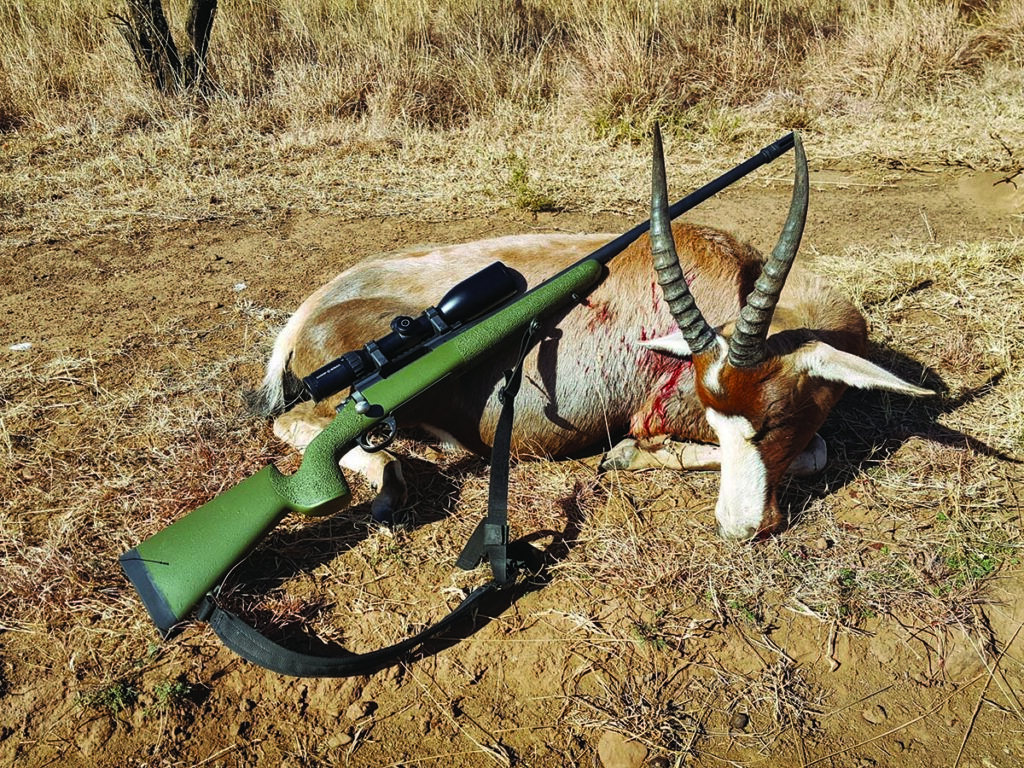
On some occasions, multiple animals were culled with simultaneously taken shots from multiple hunters. Other times, a single hunter was told to shoot one animal and then another once the second ran a short distance and stopped. Culling hunts result in higher tallies than traditional hunts, and by the end of day one, each hunter had at least six to their credit. While afield, we discovered some animals can trigger massive movement of entire herds, like a domino effect. When warthogs take off, the wildebeest will follow, and then other plains game. These animals didn’t stop to investigate, they simply ran out of instinct. This made the hunt more challenging and even though game wasn’t always taken with each stalk, watching animals run en-masse was incredible.
Management hunts are closely regulated, planned, and coordinated, and we were supposed to be the only people on the properties where we hunted. That didn’t mean poachers were non-existent, and in between harvesting game, we stumbled upon a poached wildebeest rotting in a field. We located spent shotgun shells and notified the local authorities who came out to investigate. Culling animals is controlled and sound conservation. Poaching is illegal and leads to waste. This episode highlighted the significance of what we did and proved how valuable the meat is to locals.
Field Processing
Professional skinners handle much of the gutting and skinning. These local men and women use any sharpened edge in a dedicated indoor/outdoor butcher shop to clean the harvested game. We just needed to get it there, which meant the extent of our heavy lifting was helping load carcasses into the safari truck. Our skinners worked on multiple game simultaneously and saved every internal organ for personal use.
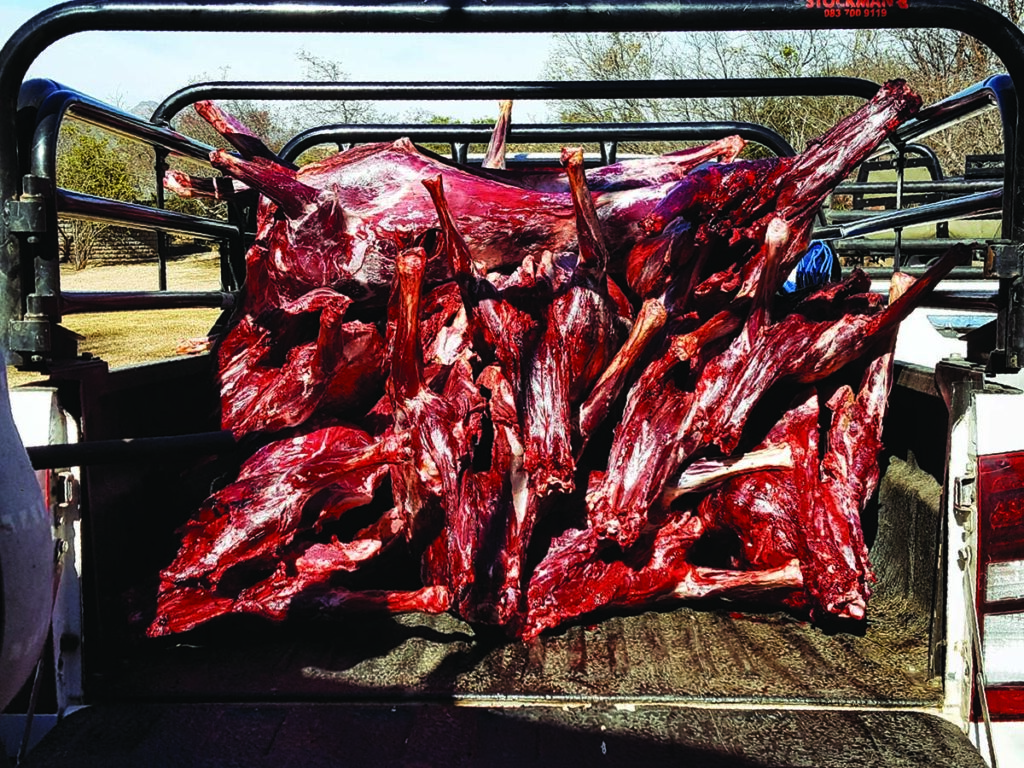
Outsiders don’t realize African safari hunts aren’t just for the hunter. Local communities rely on the “extra” meat some would consider waste. We were pleased to see all the organs draped over the nearby fence waiting to be taken home at the end of the day. The professional skinners stewed the organ meat and fed their hometown communities with it. The processed impala, blesbuck, and wildebeest were hung to age a day or two before moving them to a dedicated walk-in freezer.
Butchering
On Russ Field’s property, he walked us through the butchering process. With the help of Garrett, one of his trackers, Russ used a bandsaw to cut impala and wildebeest into a half-dozen bags of bone-in meat. Bone-in is preferred by the locals, and when turned into stew it provides more flavor than boneless lean cuts. The entire animal is cut into small portions with enough per bag for each student to have a 3-ounce portion with each meal. Over 150 pounds of meat was packaged for delivery, and the remaining meat was stored in large walk-in refrigerators for future processing.
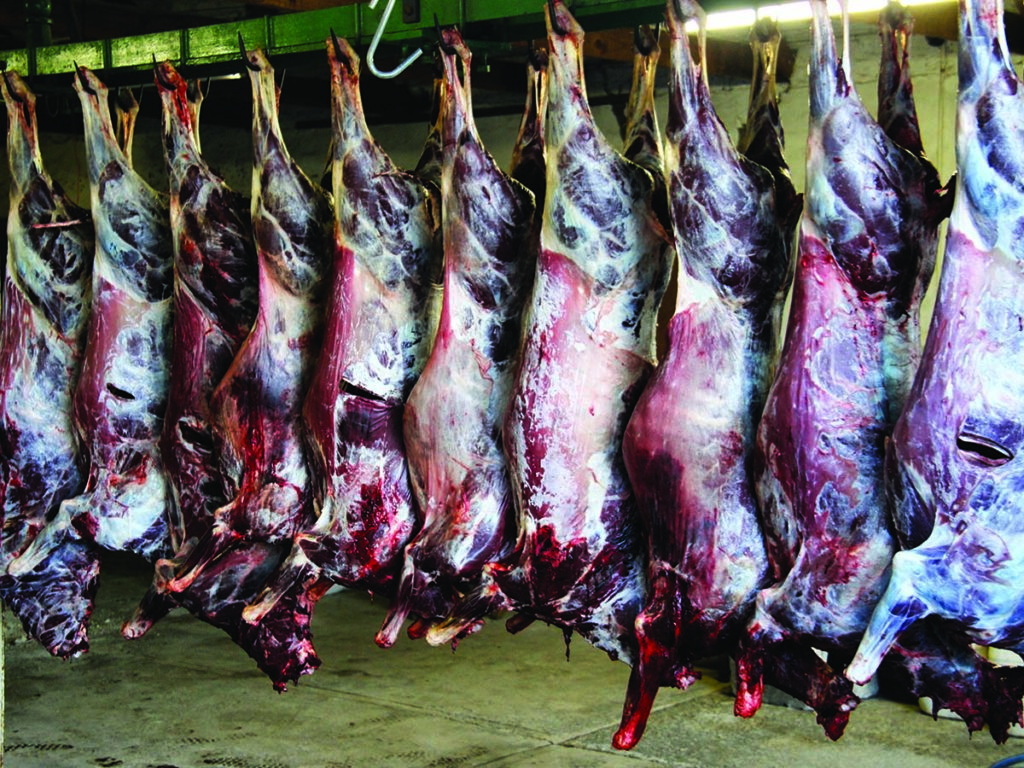
Delivery
Russ Field Safaris is partnered with the Amasango Career School in Grahamstown, and some of the meat we harvested in Queenstown was slated for delivery to other schools in that town. When we accompanied Russ to the school, we made our way past hired private security to the principal’s office, where the meat is stored in a donated top-loading freezer. That freezer is under lock and key in a gated room, since the staff at the school started taking home meat meant for the school kids. If you count the lock on the school and the gate around it, there are at least four locks between the outside world and the highly coveted protein contained within.
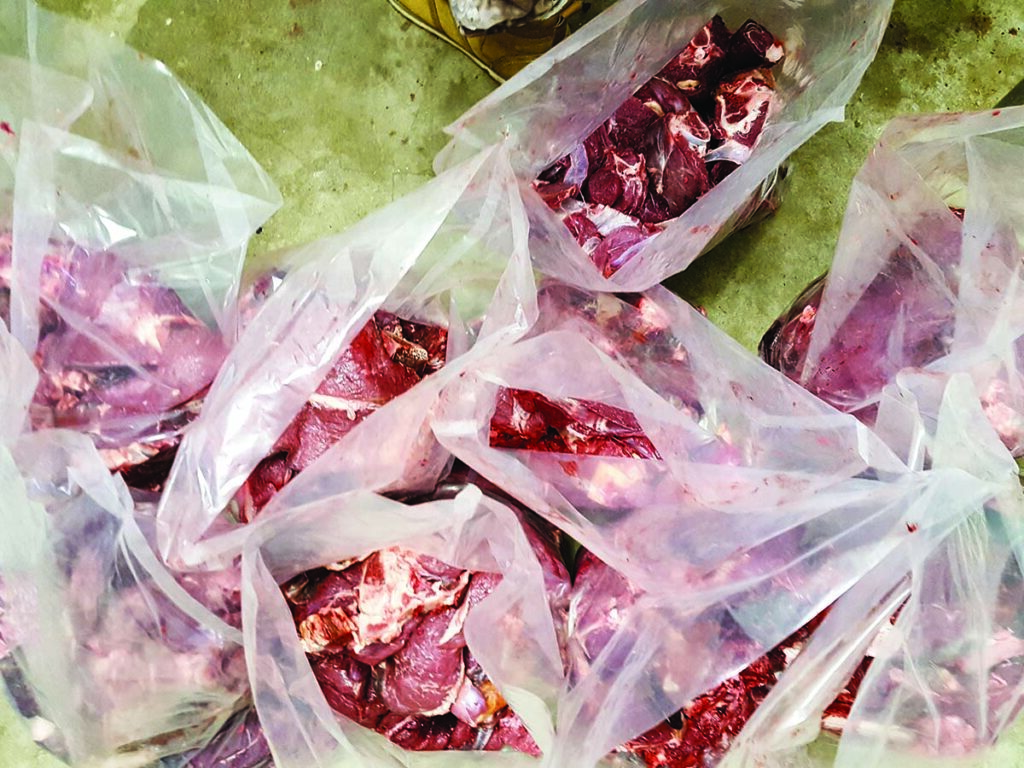
We followed Russ to the classrooms, where he spoke to some of the 120 students advising them in the local dialect to stay in school, create opportunities by working hard, and avoid the illicit lures of theft, drugs, and criminal activity. We were introduced to the class as the people who “help donate all that delicious meat” and seeing the students’ appreciation was as rewarding as the hunt itself. In speaking to a school official, we found many students only have protein in their diet when they eat lunch at school and that prior to the weekly donations from Hunter’s Care, there was no meat in the school lunches at all.
It’s Not Over
The numbers are staggering, and our efforts are just a partial solution to a much larger problem. The school we donated the meat to has approximately 120 students. This is just one school in one town. There are many other towns with many other schools. South Africa needs help, and the guided management hunts for foreign visitors provide the financial backing to pay professional hunters, trackers, skinners, and additional conservation efforts. As long as management hunts like this are offered, the Hunters Care program will ensure proper conservation will continue and children will be guaranteed a protein-filled meal they would otherwise not receive by legal means.
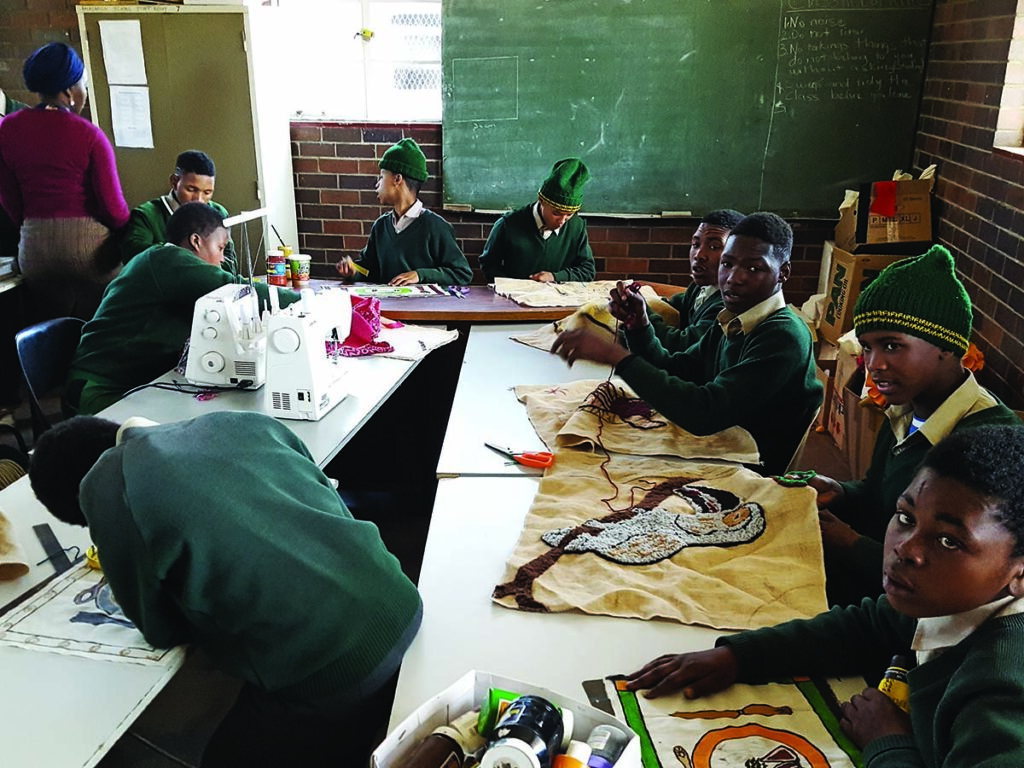
Russ Field On Hunters Care
We wanted to learn more about the Hunters Care program and had a chance to interview Russ Field about the program.
CARNIVORE: What is the philosophy of Hunters Care?
Russ Field: Where and when possible, the fund promotes a hunting advocacy message while alleviating poverty by facilitating self-sufficiency programs to encourage people to fend for themselves, restoring peoples independence, pride, and dignity.
CARNIVORE: Is anyone else doing what you’re doing?
RF: I think there is another organization called Hunters for Hungry that was operating out of Texas or somewhere in the U.S. I read up about it before I tried setting something up on PHASA’s behalf, so there was definitely something. I’m not sure if it is still running, and I’m not sure why. I think because maybe your regulations are very strict on meat donations, sales, etc., where ours are a lot looser.
NOTE: There is in fact a group called “Hunters for the Hungry” with a similar mission that has been in operation since 1991 and covers many states. Their website is www.h4hungry.org.
CARNIVORE: What do you want to say to people who object to the killing of overpopulated animals for the purpose of feeding the less fortunate?
RF: First off, I would give them a big “f*#k you.” Without hunting, it would be a case of overpopulated animals starving to death and wasted meat that could have gone to an overpopulated starving children population as well.
Hunters Care not only supports local schools, but also orphanages, old-age homes, and villages. In areas where livestock-raised meat is expensive and difficult to access, hunters fill the gap, providing 2.6 tons of meat each year. Hunters Care strives to reverse the misperception that professional hunting is a wasteful activity. Hunting serves a much larger community than just the hunter alone.
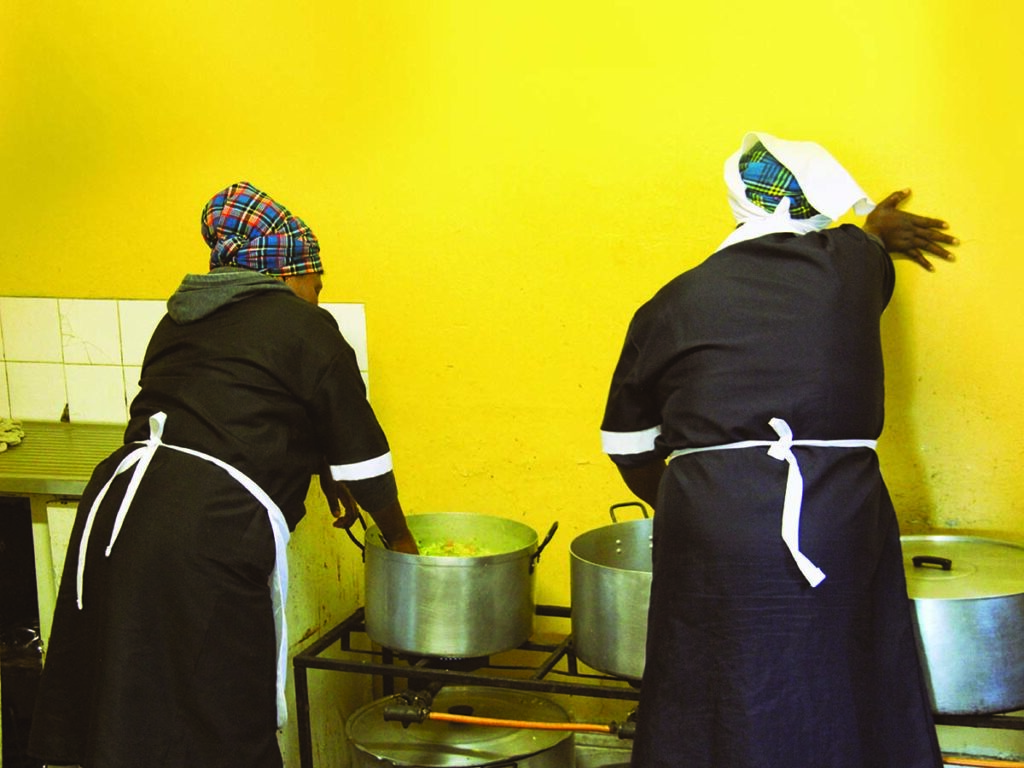
To learn more about Russ Field Safaris, visit their site at www.russfieldsafaris.com.
For booking information, contact Mark Enie with Primo Adventures; they handle reservations for Russ Field here in the United States.
Editor’s Note: This article originally appeared in Carnivore Magazine Issue 3.
Why You Can Trust CARNIVORE
Since its launch, CarnivoreWeb.com has been a trusted authority on hunting, fishing and wild food, delivering expert insight for outdoorsmen who live the field-to-table lifestyle. More than a hunting and fishing site, CarnivoreWeb.com covers the full spectrum of the modern outdoors—from rifles, bows, and fishing gear to cooking, conservation and adventure.
Our contributors are drawn from across the hunting and angling world, including seasoned guides, lifelong hunters, competitive shooters and outdoor writers with decades of field experience. Every review, article and feature is built on firsthand testing, deep research, and an unwavering commitment to accuracy.
Commitment to Journalistic Principles
At CarnivoreWeb.com, upholding journalistic integrity is our top priority. We follow strict editorial standards to ensure all content is accurate, transparent, and unbiased. Our editors and writers operate independently, free from outside influence, advertisers or stakeholders. We adhere to established journalistic codes of ethics, holding ourselves accountable for the information we publish, correcting errors when they occur and disclosing any potential conflicts of interest.
This commitment ensures that our readers can trust CarnivoreWeb.com to provide reliable, honest coverage that helps them make informed decisions—whether selecting gear, honing outdoor skills or preparing wild game.
Find out more about our Editorial Standards and Evaluation Process


